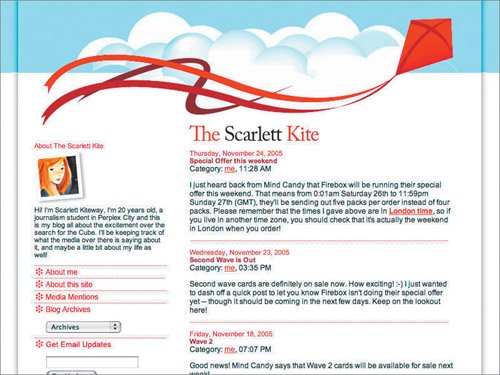| We are starting to see content cross between media channels as never before, and interaction designers will frequently have to work in these different channels. Famously, music has spread from stereos to computers to MP3 players. I can now watch TV shows on my television set, computer, and iPod. New content increasingly is being created to take advantage of the strengths and weaknesses of the various media channels. Viewers can text message to vote on game shows like American Idol. The TV show Lost assumes that viewers will be watching on a TiVo device or an iPod with the ability to freeze frames and that they will then discuss these frames in online forums. Some content is conceived with transmedia propertiesPokemon, for instance, inhabits games, movies, TV shows, Web sites, and so on, ad nauseum. This transmedia experience finds its fullest expression in what are being called alternate reality games (ARGs). ARGs are frequently used to promote movies; for instance, the ARG The Beast promoted the movie A.I., and the ARG Metacortechs promoted the Matrix movies. ARGs deliberately blur the line between what is in the game and what isn't, typically by pointing users to multiple Web sites, some of which are real and some of which aren't. These Web sites are usually where main game "play" happens, although many games also use e-mail, instant messaging, and text and voice messages to supplement or enhance the game play (see the Perplex City case study). Case Study: Perplex City The Company Mind Candy Design The Problem Mind Candy Design wanted to create a game that would cross many types of media (Internet, television, mobile phones, newspapers, and so on) and could be played globally by thousands of people simultaneously over a long time period. The Solution Perplex City is a hybrid collectible-card game and alternate reality game (ARG) whose goal is to locate a stolen object. The object is real, hidden somewhere in the world, and the game offers a real $200,000 reward to the player who finds it. Players buy packs of six cards (there are 260 total cards), each of which has a puzzle on the front. The puzzles include riddles, origami challenges, pop-culture trivia, logical mindbenders, 3D mazes, and Egyptian hieroglyphs. Players can assemble many of the cards together, creating large maps or new puzzles. These puzzles range from very simple to incredibly intricate.
A set of Perplex City cards. The cards provide clues to puzzles and can, when put together, make larger puzzles. 
courtesy of Mind Candy Design The game crosses media like few others have: sometimes a puzzle directs players to fake corporate Web sites or to blogs that contain other clues. Players may need to send text messages to get information, or check the classified ads of newspapers in China, or, in one case, become a published author in order to gain access to a research library that contains critical information! Players enter answers at the Perplex City Web site, where they earn points for correct answers and can compare their rankings to those of other players.
An example of a "fake" Web site for Perplex City, which has clues for solving one of the game's puzzles.  courtesy of Mind Candy Design |
|

